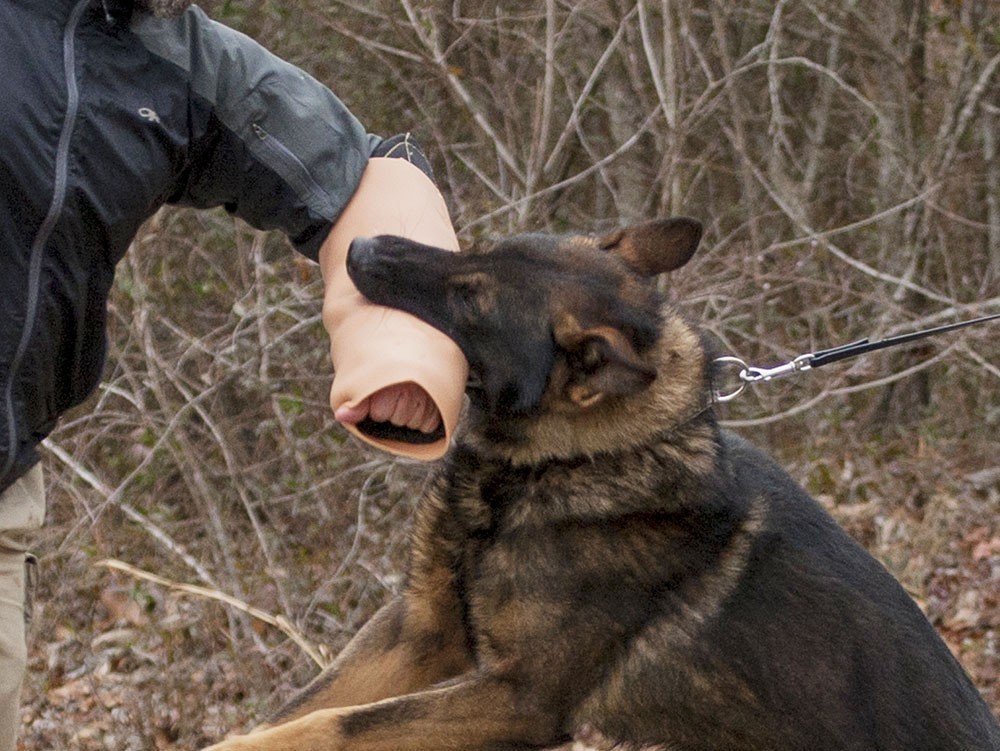The US Army has developed a more realistic bite sleeve for training military working dogs. Worn by the trainer during biting exercises, the protective silicone and Kevlar sleeve looks and feels more like a human arm when bitten, but still shields the wearer from harm.
Military working dogs are an integral and extremely valuable part of modern armies. With their intelligence, keen senses, agility, protective nature, and intense loyalty to their handlers, they fulfill a wide variety of duties, including security, patrol, explosives and drug detection, tracking, search and rescue, guard, sentry and tactical missions.
Like their human counterparts, these canines require the highest levels of very expensive training. In particular, they need to know how and where to bite when they need to help restrain a potentially hostile person. The dogs need to learn not to attack particularly vulnerable areas, like the face, neck, or groin, and even when going for the arm, they need to know how and where to bite.
As anyone who has given a terrier a lamb bone will know, even a relatively small dog can bite with a surprisingly destructive force. They can also bite very softly and check themselves in a guilty instant when a game of tug-of-war brings the jaws down on a hand rather than a squeaky. The trick is to teach the dog the finer points of control.

US Army
An important tool for this is the training sleeve. However, the ones currently in use are made of materials like jute and are too bulky and feel too little like human skin and flesh to simulate a real-life arm. This can confuse the trainee dog and cause it to hesitate. Because they require additional appendages that add extra bulk, even silicone bite products can be equally confusing.
Developed by a team led by Dr. Stephen Lee, a senior scientist at the US Army Research Office, the new bite sleeve has an outer layer of non-toxic, prosthetic-grade silicone with an interior mesh that gives it a texture and resilience much more like the skin on the human forearm. In addition, it has inner layers made of leather, dissipating foam and several layers of Kevlar fabric. These make the sleeve thinner, so it allows for a full-mouth bite, while two adjustable straps provide for bespoke fitting.
The new sleeve is now being used by the US Army Special Operations Command. Meanwhile, Campbell University is working on an even more realistic concept design that bleeds artificial blood when bitten.
“Military working dogs are a very important team member and their training is equally important,” says Lee. “These invaluable dogs have provided incomparable support helping soldiers accomplish their mission and saving soldier’s lives. This new bite sleeve training tool has greatly helped in the development of effective combat canines.”
Source: US Army
Source of Article